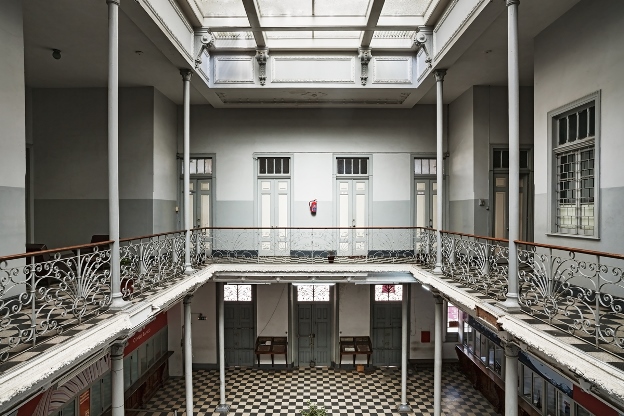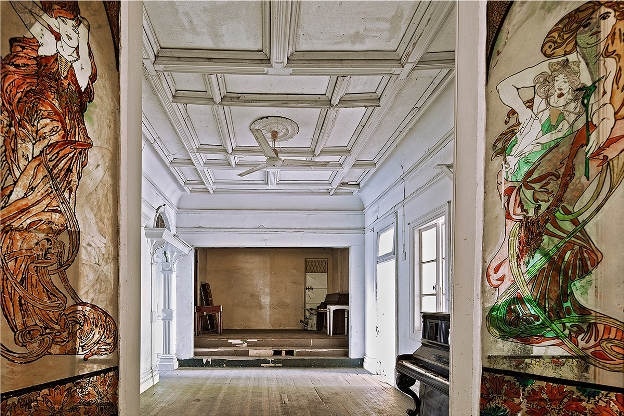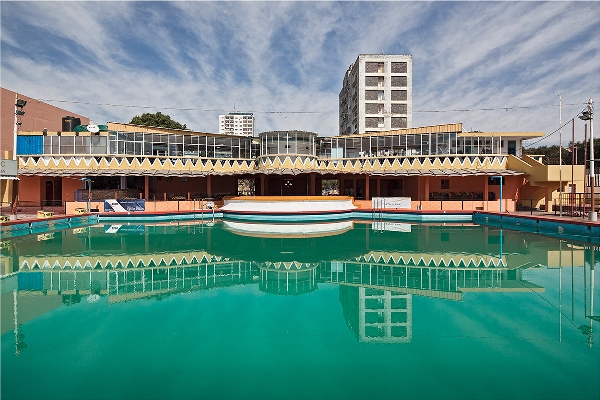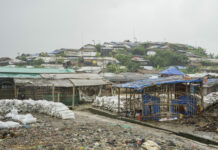Maputo is a city that is ever changing, with buildings going up as quickly as others are brought down. FILIPE BRANQUINHO, a well-known Mozambican photographer, has documented this landscape for the past five years, culminating in an exhibition called Paisagens Interiores (Interior Landscapes). Dana da Silva spoke to Branquinho about the exhibition, the city and its architecture.
What can you tell me about the theme of this exhibition?
It started as a survey of historical buildings of Maputo’s public buildings. But then we decided, with the curator, to focus more on the interior of the buildings because we believe that inside is where the real story of the building happens, where everything has a stronger significance.
This is architecture photography, but it’s not a work about architecture and it’s not a work about the best examples of architecture in Maputo. You can find some very beautiful buildings, but this is a work about the memory of the city. It is a city that is changing, with this huge colonial heritage that is disappearing and maybe it’s a work about how you can find all these different periods of history inside a building. It is about the story of the city through its architecture.
A lot of these buildings are falling apart- why is this memory not being preserved?
There are many different reasons. One that is for sure is because it’s not a rich country, so it’s not a priority to rehabilitate the buildings. On the other end, I believe that in Mozambique there is no concern for the collective space. People are very worried about their houses, their own places, but they forget about these urban spaces. So it might not be a priority to preserve these buildings. They are part of the history but maybe they are not part of the cultural heritage.
I think we need a new generation completely detached from the colonial times that can look to these places and see their strong meaning and the value to preserve.
Do you think that these buildings still have a place in the new Maputo, where a lot of the focus is on new buildings?
I hope so, they are really beautiful buildings. They are colonial buildings but they have been through at least three generations, at least two after the independence. If you talk with our Portuguese grandparents, they can look back and say “Oh the city used to much cleaner and beautiful, everything was painted. I miss Lourenço Marques (old name for the city)!â€
But it was not a fair city. It was not a city for everybody. It was only for the white people. If you talk with a black guy from the same generation in Maputo he might say that “It was really clean but it was a city that I was not able to use, I just came as a worker.†But if you talk with people in my generation, black or white, it doesn’t matter. They probably have very happy childhood memories of the city in the independent country. So I think the interesting thing about this work is these different opinions and how you can create this dialogue between these generations.
What are some of the challenges you encountered when taking these photographs?
The most difficult one is that you are photographing a city that is changing. You are living in the moment so it is quite difficult to know exactly what you are looking for. In the first or second year you are just photographing, and to find the theme inside that huge theme is something that you have to work out. It’s quite difficult.
Today it’s not so easy to go inside many buildings because they are public institutions and people are really suspicious, “What are you doing here? What do you want?†Like you have this agenda or something like that, some authorisations can be very difficult. I think the biggest challenge is to try and create this story while it’s happening, because you have to do it very quickly. In the last five years, the city has changed a lot.
What do you hope that people will take away from the exhibition?
I think that this should create deep debates. We wanted to invite more people to come from universities so they could discuss the city, and to answer all these questions that you are asking.
Is it a priority to keep these buildings? Should we change these buildings and give Maputo a new look? Should we preserve the colonial memory? It’s not our culture but it’s an important story. All these things for me are very important. The most important thing is for people to stop and see the city they live in.
I’m talking about the people that live in Maputo, not the foreign people. I hope that this helps people to have a new, refreshed look at the city and maybe see that it’s such a beautiful city and we should preserve this.
Why did you photograph the buildings interiors without people?
I believe when you photograph these spaces without people, you don’t feel any life. You feel that they are spaces that were used. You can feel the people even if they are not there. If I photographed these spaces with people, probably the impression that you take away from the exhibition would be completely different.
I started to feel that this might give some impressions to the people, the views that I was not expecting. Trying to communicate that – that’s the good thing about art.













